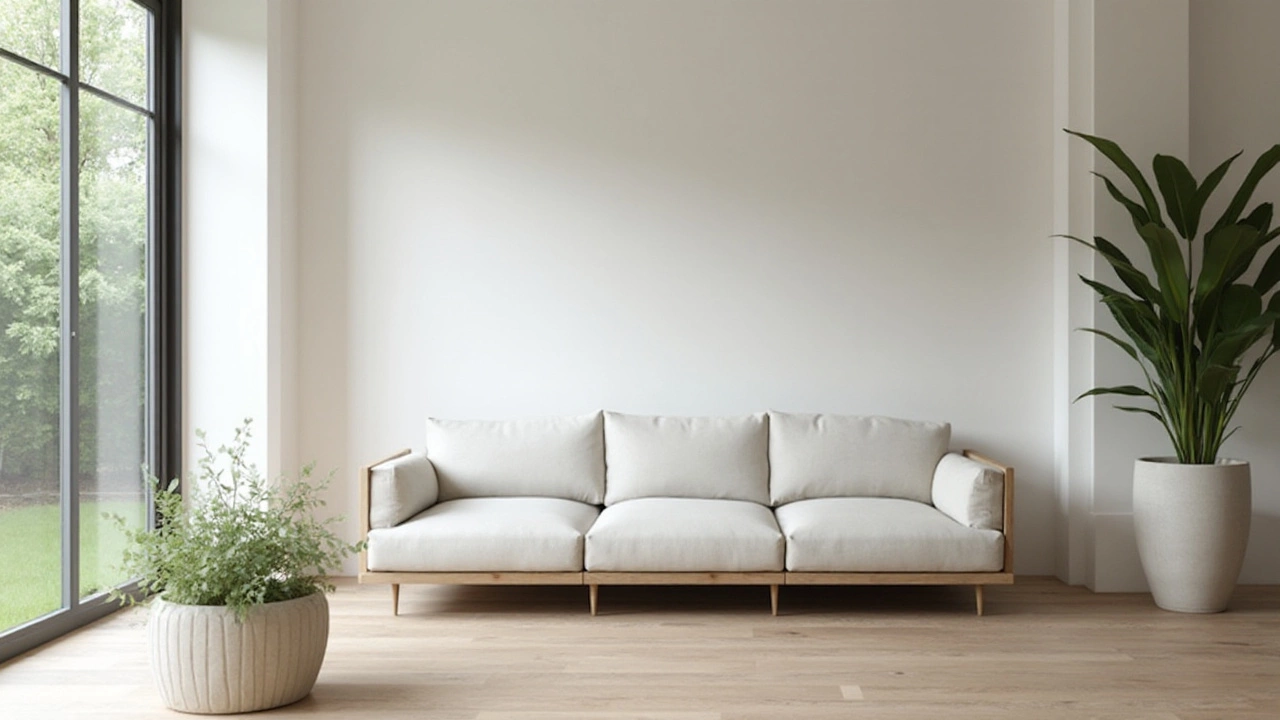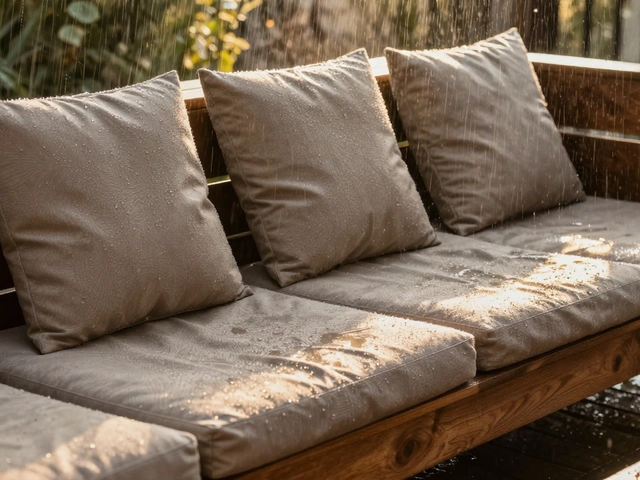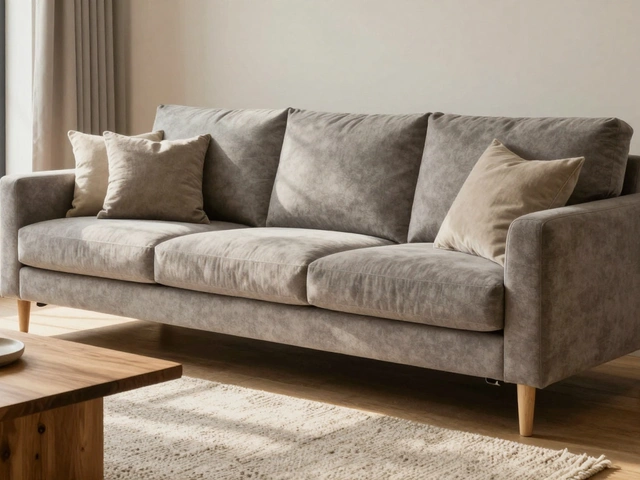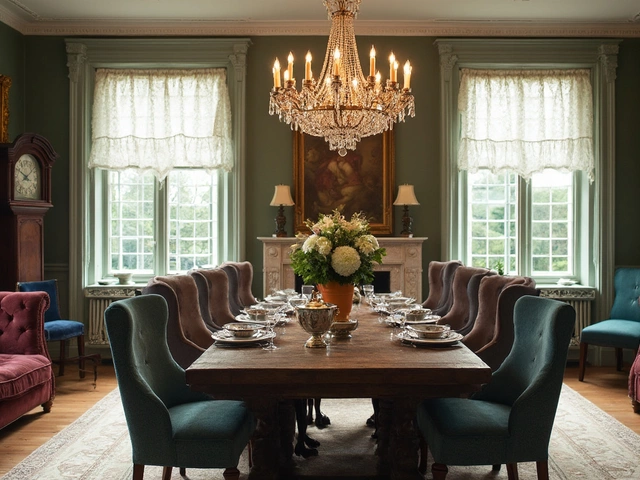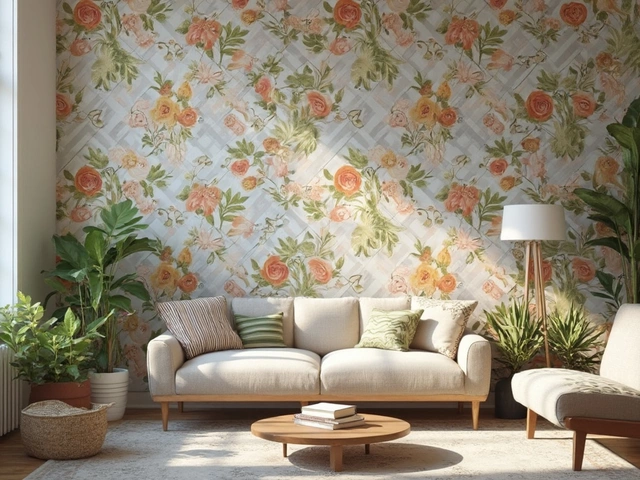There's something intriguing happening in the world of furniture sales. People seem to be pulling back on their purchases, leaving many to wonder just what's driving this trend. It's not just about tightening budgets or downsizing spaces—though those factors surely play a part. It's a mix of economic shifts, lifestyle choices, and a collective nod towards sustainability.
As we dive into the reasons behind this change, we'll explore how the appeal of minimalist lifestyles and environmental responsibility are influencing buying habits. Whether you're a potential buyer, a seller, or just curious about the way things are evolving, this exploration offers insights tailored to today's market landscape. Get ready to look at your living space, and your buying preferences, in a whole new light.
- Economic Factors: A New Reality
- Shifting Consumer Preferences
- The Impact of Minimalism
- Environmental Concerns
- Smart Furniture Buying Tips
Economic Factors: A New Reality
As people purchase fewer pieces of furniture, economic considerations have emerged as a significant driving factor. In recent years, the cost of living has been on the rise, impacting discretionary spending patterns across the globe. The inflation rate has not been kind to people's wallets, effectively influencing how individuals prioritize their spending. Many consumers are focusing on essentials first, which often relegates furniture buying to the background. Personal savings rates have also been fluctuating, with individuals becoming more cautious about investing in large, non-essential items for their homes.
Amid these economic pressures, the rise of flexible work arrangements, such as remote work, has shifted the landscape of home furnishing needs. With less emphasis on commuting and office life, many people are reconsidering the necessity of elaborate home office furniture setups. Instead, consumers are adapting their existing spaces to fit multifunctional needs, using creative solutions to stretch the utility of what they already own. For instance, a living room might now double as an office and an entertainment area, reducing the need for extra furniture pieces. Home decor choices have become more about maximizing utility than acquiring new items.
According to a recent furniture trends report by a leading analytics firm, consumers are also considering the longevity and sustainability of their purchases more than ever. This trend stems from both financial prudence and an increasing awareness of environmental issues. Buying decisions are slowly tilting towards high-quality, durable items, even if they come with a higher upfront cost—a significant shift in buying habits from the previous preference for affordability and frequent replacements.
"We are witnessing a transformation in how individuals perceive their homes and what they choose to include in it," notes renowned economist, Jane Mitchell. "People are leaning towards fewer pieces, but they want each one to mean something or serve multiple purposes."
A final component of the economic puzzle is the ongoing adjustments in the housing market itself. Many younger buyers are opting for smaller living spaces due to affordability issues, which naturally limits the amount of furniture they can acquire. In tightly packed urban areas or tiny house lifestyles, minimalism isn't just a trend but an urban necessity. The reduction in available living space across these areas naturally clamps down on the number of furniture items that can be accommodated, thus cascading into lower sales figures for the industry.
Overall, navigating the current economic reality demands savvy decision-making by both consumers and retailers alike. Furniture sellers are having to adapt by offering solutions that align with the new market needs, whether through financing options, modular furniture designs, or products that offer the most utility in confined spaces.
Shifting Consumer Preferences
In today's fast-paced world, consumer preferences are shifting like never before. Driven by technological advances, social influences, and changing demographics, the way people approach furniture shopping is evolving. The modern consumer is savvier, more informed, and more discerning in their choices. As technology provides unlimited access to information about products, potential buyers weigh their options more carefully. Unlike the past, when big box stores dominated the market, today’s consumers often hunt for unique pieces that reflect their personalities and lifestyles.
One significant shift is the growing interest in multi-functional and space-saving furniture. With more people moving to urban centers where living spaces are smaller, there's a strong demand for furniture that does more with less. We've seen an increasing trend in furniture designs that include built-in storage solutions, modular components, and convertible pieces. For instance, a sofa that transforms into a bed or a coffee table that doubles as a work desk has become incredibly attractive to city dwellers.
According to a recent report by the Home Furniture Association, "65% of millennials prioritize functionality and adaptability when selecting home furnishings." This demonstrates a conscious move towards practical furniture purchases.Another changing preference is the movement towards sustainable and ethically produced goods. Consumers are increasingly concerned about the environmental impact of their purchases. They seek out furniture made from sustainably sourced materials or pieces that promote fair trade practices. The rise of online platforms has also played a pivotal role, making it easier for shoppers to find brands committed to these values, and to check the provenance of products.
Let's not forget the influence of social media, especially platforms like Instagram and Pinterest, which have become key players in shaping tastes and preferences. Real-life home decor influencers and digital inspiration boards offer endless ideas that inspire consumers to think outside the box, mixing styles creatively. As trends become easily accessible, they become mainstream quickly, prompting furniture retailers to adapt their offerings more frequently than before. Thus, staying ahead in the game means staying tuned in to these virtual trendsetters.
Lastly, personalization is more significant now than ever. Shoppers want their homes to reflect their individuality, leading to increased interest in custom or semi-custom furniture options. With brands offering customizable finishes, colors, and fabrics, the consumer can become a co-designer of their furniture. This push for personalized products signifies a shift from mass production to tailor-made, which can be both a challenge and opportunity for the industry. As preferences continue to shift, it's clear that furniture brands willing to innovate will be better positioned to meet the needs of today's thoughtful, diverse consumers.

The Impact of Minimalism
The minimalist movement is more than just a fleeting trend; it's a lifestyle choice that's shaping the way many approach their living spaces. At its core, minimalism champions simplicity, function over form, and the belief that less is more. This shift affects how people think about their homes and their approach to furnishing them. In the past, the quest for an attractive home often involved selecting sprawling furniture suites that filled every nook and cranny. Today, it's about choosing fewer, but more meaningful pieces that complement a mindful lifestyle.
"Simplicity is the ultimate sophistication," once said Leonardo da Vinci, a sentiment that resonates well with modern practitioners of minimalism.
As people embrace this philosophy, they're looking to find liberation from clutter and chaos. A primary reason for this shift is the desire for spaces that bring tranquility and reduce decision fatigue in an era where every moment is valuable. With the rise of remote working during and after the pandemic, many people have had time to consider the impact of their surroundings on productivity and well-being. This change has prompted individuals to carefully curate their environment, focusing on furniture that's multifunctional and speaks to personal values rather than mass consumer culture.
Another compelling aspect drawing people to minimalism is its intrinsic link to sustainability. By reducing the volume of possessions, individuals not only cut down on unnecessary consumption but also aim for more sustainable choices. Eco-friendly furniture trends like sourcing items made from reclaimed wood or investing in modular pieces that can adapt to various living arrangements are gaining traction. This thoughtful approach extends life spans of goods and is a conscious step in reducing waste.
Minimalism also ties into financial prudence. By prioritizing quality over quantity, buyers often end up making fewer purchases but with better longevity and utility. This aspect is crucial when considering the financial climate that has tightened belts globally. Markets like Japan, which have long celebrated simplicity in their design ethos, offer lessons in using home decor tips that maximize space while minimizing distractions. Coupled with a shift towards digital consumption, where possessions often become burdens, the idea of maintaining a more open, versatile living area offers proprietors everyday luxuries: space to breathe, think, and actually enjoy.
As the world continues to grapple with rapid change, embracing minimalism can be seen as a beacon of calmness and order. For buyers and sellers alike, understanding this influence on behavior is pivotal. Navigating this trend requires awareness and an appreciation for how small choices impact larger systems, making minimalism an enduring philosophy in the ever-evolving domain of furniture trends.
Environmental Concerns
In recent times, a heightened awareness of environmental issues has significantly influenced consumer behavior across various industries, and the furniture trends sector is no exception. More individuals are stepping back to consider the ecological footprint of their purchases, asking questions about the resources used, the longevity of items, and how these choices might affect the planet in the long run. Many customers today are steering clear of mass-produced furniture that contributes to the deforestation crisis or uses harmful chemicals in production, sparking a demand for more sustainable options. This shift highlights a collective movement towards eco-responsibility that aligns with wider societal values of reducing waste and embracing environmentally-friendly practices.
Wood, often heralded for its natural appeal, is at the center of this discourse. The alarming rate of deforestation globally has raised eyebrows and fueled a push for more sustainable sourcing. The Forest Stewardship Council estimates that over 18 million acres of forest are lost each year, a statistic that paints a troubling picture for future generations if left unchecked. This collective consciousness among consumers is increasingly pressuring companies to explore alternative materials or to source wood responsibly, ensuring that it comes from sustainable forests. Bamboo and reclaimed wood are gaining prominence as preferred materials due to their renewability and lower environmental impact, making them appealing choices for eco-conscious buyers.
Buying habits are further influenced by the conversation around sustainability, as indicated by a survey conducted by the Global Furniture Industry organization. It revealed that nearly 65% of consumers would be willing to pay a premium for furniture that is sustainably produced. This data speaks volumes about the modern shopper’s priorities—moving away from inexpensive, short-lived items towards those that offer durability with minimal ecological disruption. People invest not just in quality, but in the assurance that their purchases reflect their values towards environmental stewardship. This essential shift could herald a new age for the furniture industry, one where responsible production and innovation coexist harmoniously.
Moreover, the home decor tips landscape is adapting accordingly. Influencers, bloggers, and interior designers are advocating for upcycling and refurbishing old furniture instead of discarding it. This not only alleviates landfill buildup but also imbues living spaces with unique character and history. As the conversation around the environmental impact of consumer goods grows louder, it prompts individuals and businesses alike to rethink the traditional approach to consumption.
"Our planet cannot sustain the throwaway culture, particularly in sectors like furniture where the impacts are vast and far-reaching," said Jane Goodall, renowned ethologist and conservationist, highlighting the pressing need for change.As awareness spreads, it paves the way for emerging brands focused on producing furniture that is both aesthetically pleasing and kind to the earth. The growing popularity of circular economy concepts, where furniture design involves reusing and recycling existing materials, illustrates the shift towards sustainability. This momentum is not just a trend but a necessary evolution in how we relate to the objects that fill our homes. Environmental concerns are reshaping the market landscape, urging both consumers and producers to prioritize health and sustainability over traditional metrics of convenience and cost.
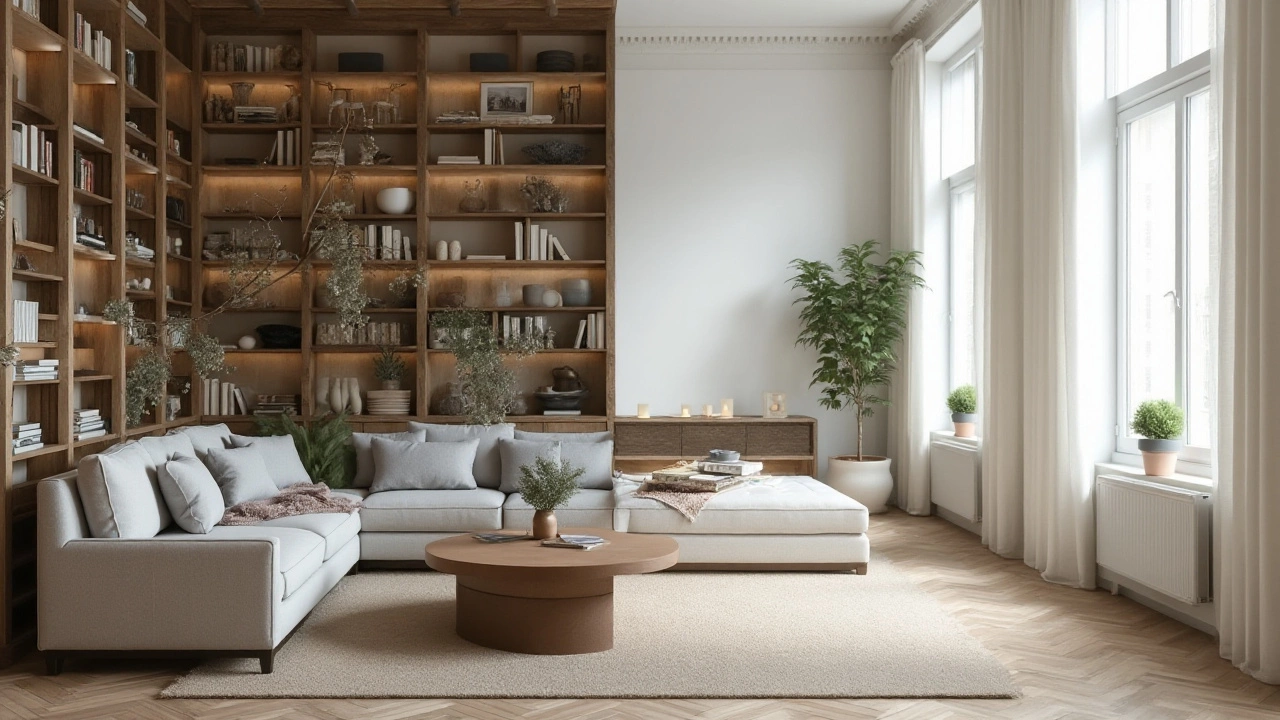
Smart Furniture Buying Tips
In today's ever-evolving marketplace, purchasing furniture has become an art of keen discernment and strategic planning. Embracing this smart buying approach can transform your space without breaking the bank. It starts with understanding your personal style and space requirements. Identifying your aesthetic—a blend of functionality and visual appeal—can help navigate the endless options available. Size matters, too; it's crucial to measure your space accurately so that your new pieces fit without crowding the room. This ensures the balance and flow remain harmonious, ultimately enhancing the overall living experience. What's fascinating is the transformative power that furniture holds; it doesn't simply fill a room; it shapes it, often more than we give it credit for.
The savvy shopper knows that timing can be everything. Interestingly, furniture trends show that sales often peak during holiday weekends, which include Presidents Day, Memorial Day, and Labor Day, when retailers typically launch big promotional events. Nevertheless, patience can pay off, especially as many retailers clear inventory at the end of seasons. A keen eye on these cycles can lead to significant savings without sacrificing quality. Additionally, consider the material and construction quality of the piece. Look for solid woods over particleboard, and authentic leather or high-quality fabrics for upholstered items—these materials tend to endure daily wear better and age gracefully over time, ensuring your investment stands the test of time.
Another savvy tip is to look for multipurpose furniture, especially in urban living settings where space comes at a premium. Pieces like sofa beds, extendable dining tables, or ottomans with storage can serve several functions, maximizing utility without overcrowding. Moreover, this kind of furniture often echoes the growing popularity of minimalist living, a trend that continues to influence buying behavior. Costco, a leading wholesale giant, reports an increase in demand for these smart pieces, illustrating how consumers are prioritizing functionality and efficiency in their homes. A focus on versatility, thus, is not just practical but also economically savvy.
As the conversation around environmental impact intensifies, more individuals are leaning towards sustainable choices. Opting for furniture crafted from recycled or sustainably sourced materials can significantly reduce your carbon footprint. Brands that use eco-friendly practices are not just responsible choices but are increasingly synonymous with good quality. Investing in such pieces is a statement that aligns with many consumers' values today. Interestingly, a recent Consumer Reports analysis suggested that sustainable furniture sales have steadily increased over the past decade, underscoring a shift towards conscious consumerism.
"The way we furnish our homes is evolving alongside our awareness of environmental impact. There's an intrinsic value in buying quality over quantity, a sentiment echoed by many in the design industry," shared respected designer Joy Johnson.Leveraging local craftsmen can be another insightful approach, often yielding bespoke pieces with a personal touch. This not only supports local economies but also adds unique character to your home that larger retail brands may not replicate.
Staying informed about trends, materials, and industry practices enhances your purchasing power, setting you up for home furnishing success. Ultimately, smart furniture buying boils down to being mindful of choices, both big and small. Whether it's following trends, waiting for sales, or choosing sustainable practices, each decision contributes to a home that's both stylish and reflective of personal values. In a world where furniture serves as the backbone of home decor, the power of informed purchases cannot be overstated. The right piece isn't just an item; it's an extension of your lifestyle and identity.
